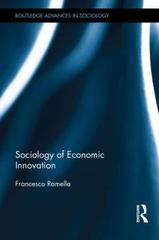Question
The First Great Awakening also gained impetus from the wide-ranging American travels of an English preacher, George Whitefield. Although Whitefield had been ordained as a
"The First Great Awakening also gained impetus from the wide-ranging American travels of an English preacher, George Whitefield. Although Whitefield had been ordained as a minister in the Church of England, he later allied with other Anglican clergymen who shared his evangelical bent, most notably John and Charles Wesley. Together they led a movement to reform the Church of England (much as the Puritans had attempted earlier to reform that church) which resulted in the founding of the Methodist Church late in the eighteenth century. During his several trips across the Atlantic after 1739, Whitefield preached everywhere in the American colonies, often drawing audiences so large that he was obliged to preach outdoors. What Whitefield preached was nothing more than what other Calvinists had been proclaiming for centuries?that sinful men and women were totally dependent for salvation on the mercy of a pure, all-powerful God. But Whitefield?and many American preachers who eagerly imitated his style?presented that message in novel ways. Gesturing dramatically, sometimes weeping openly or thundering out threats of hellfire-and-brimstone, they turned the sermon into a gripping theatrical performance."
?Christine Leigh, Heyrman, historian, from her essay "The First Great Awakening"
"Nineteenth-century America contained a bewildering array of Protestant sects and denominations, with different doctrines, practices, and organizational forms. But by the 1830s almost all of these bodies had a deep evangelical emphasis in common. Protestantism has always contained an important evangelical strain, but it was in the nineteenth century that a particular style of evangelicalism became the dominant form of spiritual expression. What above all else characterized this evangelicalism was its dynamism, the pervasive sense of activist energy it released ... This evangelical activism involved an important doctrinal shift away from the predominately Calvinist orientation that had characterized much of eighteenth-century American Christianity ... Salvation was purely in God's hands, something he dispensed as he saw fit for his own reasons. Nineteenth-century evangelicals like Finney, or Lyman Beecher, or Francis Asbury ... harbored an unshakable practical belief in the capacity of humans for moral action, in the ability of humans to turn away from sinful behavior and embrace moral action."
?Donald Scott, historian, from his essay "Evangelicalism, Revivalism, and the Second Great Awakening"
A. Briefly explain ONE major difference between the First and Second Great Awakening as described by the text excerpts.
B. Briefly explain A SECOND major difference between the First and Second Great Awakening as described by the text excerpts.
C. Briefly explain how ONE event or development not described by the text excerpts could be used to support an explanation of the differences between the First and Second Great Awakening.





Step by Step Solution
There are 3 Steps involved in it
Step: 1

Get Instant Access to Expert-Tailored Solutions
See step-by-step solutions with expert insights and AI powered tools for academic success
Step: 2

Step: 3

Ace Your Homework with AI
Get the answers you need in no time with our AI-driven, step-by-step assistance
Get Started


